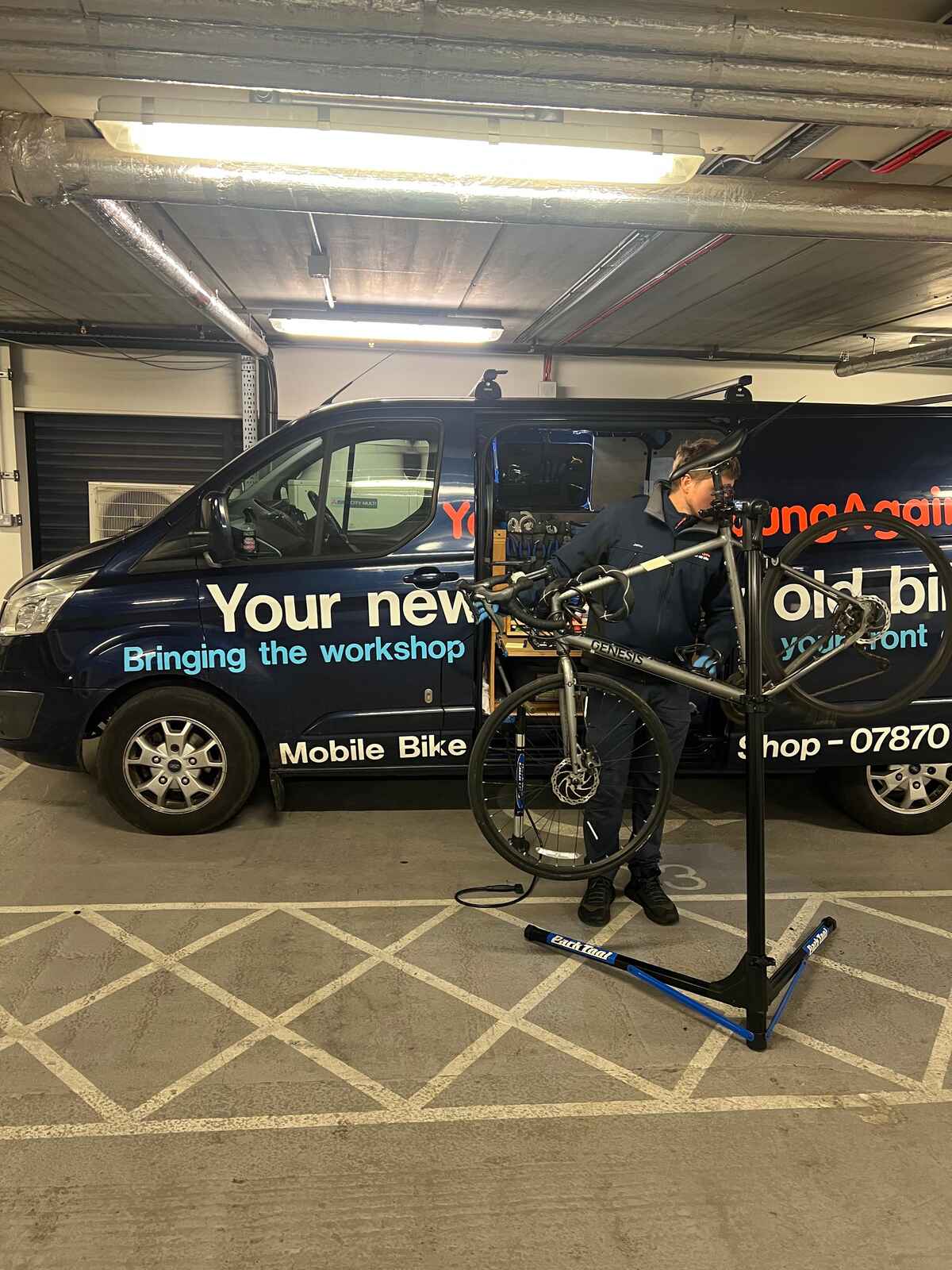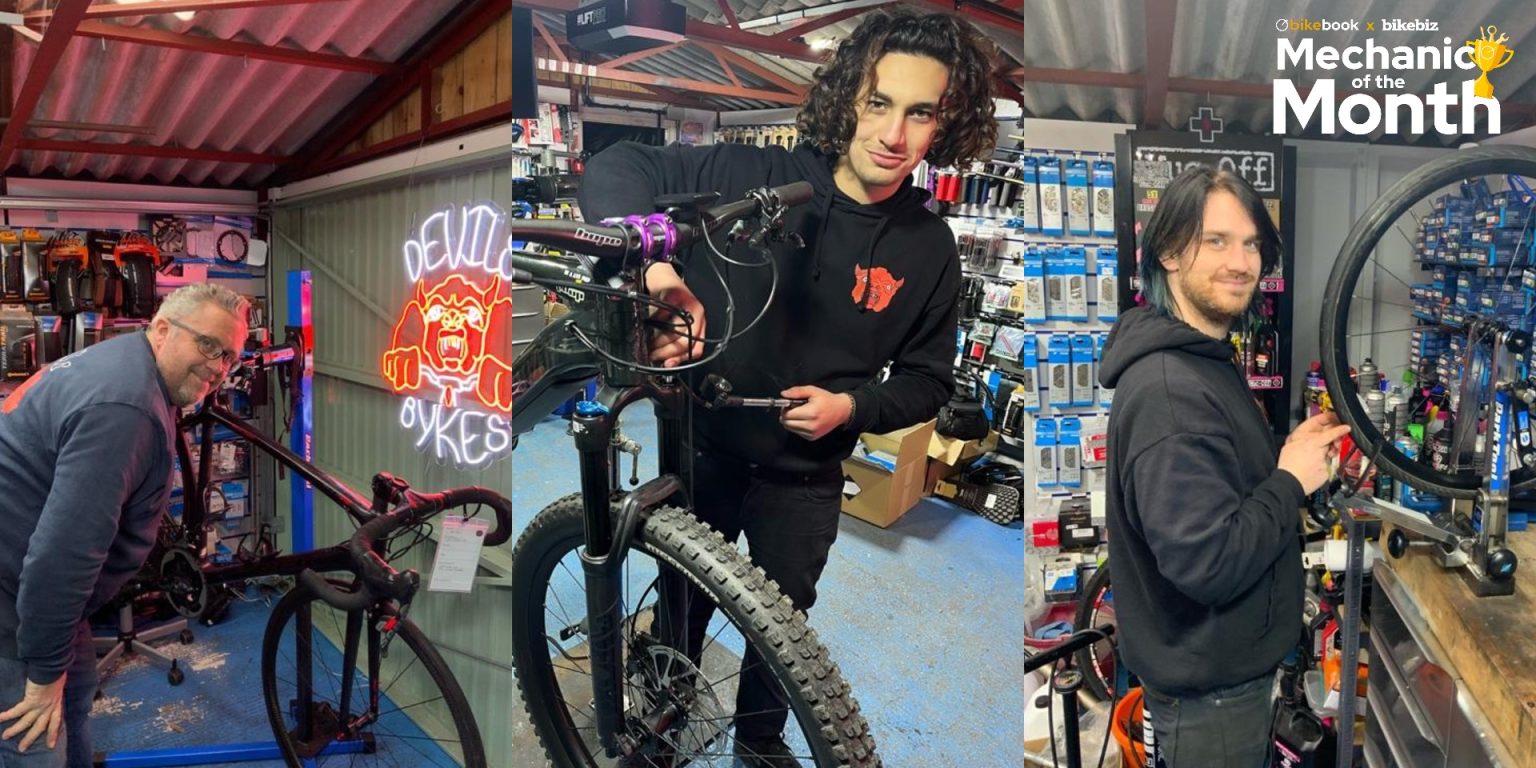December 6, 2025
•
8 minute read
How to Fix a Buckled Bike Wheel
So, your bike wheel seems to have developed a mind of its own, wobbling like it's had one too many during a coast downhill.
Jake Fieldsend
Founder & CFO
So, your bike wheel seems to have developed a mind of its own, wobbling like it's had one too many during a coast downhill. You've invested in that bike, spent hours fine-tuning it, but now a buckled wheel threatens your freedom on the road or trail. This isn't just a nuisance; it's a roadblock to your smooth ride experience. Frustrating, right? This guide is your ticket to tackling the issue head-on. We're diving directly into understanding how to fix a buckled bike wheel—so you can keep those rides smooth and enjoyable.
1. Identifying a Buckled Bike Wheel
1.1 What is a Buckled Wheel?
A buckled wheel isn’t just an aesthetic blemish on your trusty ride; it's a real mechanical malfunction. Simply put, it refers to when your wheel becomes out of true, meaning it wobbles from side to side. This isn't just a minor inconvenience; when left unchecked, a buckled wheel can turn into a major safety concern. As you navigate the streets or trails, any imperfection can quickly escalate, affecting stability and performance.
You'll notice the wobble primarily when you're riding—but even parked, a quick spin can illuminate the problem. Check for side-to-side movement or oscillation in your wheel's rotation. It's subtle but significant, especially for serious riders who relish in the seamless mechanics of their bikes.
Pro-tip: Use your bike's brake pads as a reference. If the wheel consistently rubs against them as it spins, it's time to check for buckling.
1.2 Signs Your Wheel is Buckled
Spotting a buckled wheel early can save you heaps of trouble. Here are the telltale signs that your wheel might be buckled:
- Uneven Brake Rub: If you hear that annoying rub, check your wheel—it could be drifting too close and hitting your brake pads.
- Visual Wobbling: Spin your wheel and watch it. Does it look more like a crinkle-cut chip than a straight line?
- Ride Discomfort: Feeling an unexpected, shaky ride on a well-paved road? That's often the wheel talking.
Examining these pointers regularly won’t just catch a buckled wheel early; it'll preserve your riding joy. Plus, it's an easy habit that can extend the life of your bike components.
Pro-tip: When commuting or riding, make it a practice to spin the wheels with each pre-ride check to catch buckling as soon as it starts.
1.3 Causes of a Buckled Wheel
Understanding why a wheel buckles lays the groundwork for preventing future incidents. Here are some common causes:
- Potholes and Obstacles: Hitting these at speed can warp the wheel's shape. Even a tiny crack in the pavement can lead to bigger issues.
- Spoke Stress: Over-tightening or uneven tension in your spokes can distort the wheel's balance, impacting its structural integrity.
- Accidents or Falls: An impactful crash can damage the wheel beyond minor adjustments.
Recognising these catalysts enables better riding practices. Adjusting your riding habits, like slowing down over hazardous terrain, can help keep your wheels true and extend their longevity.
Pro-tip: Regular maintenance enhances wheel integrity. Tighten your bike’s spokes evenly to avoid placing undue tension on any single point.
2. Preparing to Fix a Buckled Bike Wheel
2.1 Tools You Will Need
Before you dive into fixing your buckled bike wheel, assembling the right tools is your first step. A trusty spoke key is a must-have for adjusting spoke tension. Make sure it's compatible with your wheel’s spoke nipples. A truing stand is excellent if you have one, but if not, your bike frame can be a good substitute. A tension meter helps in ensuring even spoke tension, and having a good torque wrench can prevent overtightening.
Consider also laying your hands on some lubricant. A drop of oil on each spoke nipple before adjustment will make the process smoother and protect against stripping. If your spokes are rusty or rough, consider a gentle wire brush to clean things up first.
In summary, you'll need:
- Spoke Key: To adjust spoke tension
- Truing Stand or bike frame: For mounting the wheel
- Tension Meter: To ensure even tension
- Torque Wrench: To avoid overtightening
- Lubricant: To facilitate smoother adjustments
Pro-tip: If you don't have a truing stand, flip your bike upside down and use calipers or a zip tie to gauge the wheel's alignment.
2.2 Removing the Wheel
Taking the wheel off your bike may seem daunting, but it's straightforward with the right approach. Start by loosening the quick release skewers or removing the bolts—depending on your bike model. Be sure your bike is securely positioned, either on a stand or upside down. This offers stability and prevents accidental damage.
Once loosened, gently pull the wheel out from the dropouts. If you have rim brakes, you might need to release the brake caliper to clear the tyre. With disc brakes, ensure not to drag the brake rotor along the brake pads to avoid bending them.
Here’s how you do it:
- Secure the Bike: Use a stand or flip the bike
- Release Brakes: For rim or disc systems
- Loosen Skewers/Bolts: Twist and slide out
- Gently Remove Wheel: Mind the brake rotors
Pro-tip: Keep washers, nuts, or release levers in a safe spot to avoid misplacement during the repair.
2.3 Setting Up Your Work Area
A well-prepared workspace makes bike repairs less challenging and more organised. Ideally, have a clean space with sufficient lighting. A bench or a cleared workspace table keeps your tools within reach and prevents unnecessary mess. If working in a confined area, a headlamp can be handy to ensure you don’t miss any details.
Lay out an old towel or rag to catch any oil drips or dirt from the wheel. Ensure that your workspace is free from any heavy or sharp objects that could fall and cause a mishap while you're deep in the repair process.
Consider these steps for setting up:
- Good Lighting: Use natural light or headlamps
- Clear and Flat Surface: Bench or table
- Towels/Rags: To keep the area clean
- Tool Organiser: Keep everything in reach
Pro-tip: Always test wheel truing on a stable surface. Even a slight tilt can misrepresent the amount of adjustment needed, leading to more challenges down the road.
3. Step-by-Step Guide to Fixing a Buckled Bike Wheel
3.1 Assessing the Damage
The first step to restoring your bike wheel to its former glory is to determine the extent of the damage. Start by spinning the wheel and observing the wobble. Is it slight or severe?
- Minor Up/Down Movement: This usually signifies a need for spoke tension adjustment.
- Side-to-Side Wobble: More extensive, requiring correction of spoke tension in multiple areas.
To be thorough, remove the wheel from your bike and examine each spoke. Gently flick the spokes — a healthy spoke emits a lively "ting" sound, while a dull or pronounced "thunk" typically indicates less tension or damage.
Pro-tip: Focus on any bent or broken spokes as these are major contributors to buckling and need replacement before proceeding.
3.2 Loosening the Spokes
Now that you've identified the problem areas, it's time to loosen the spokes slightly. This crucial step enables you to adjust tension without wreaking havoc on the wheel's structure.
- Start at the Hub: Transition your attention to the wheel hub and gently rotate the nipple (the small piece at the spoke's end) anticlockwise.
- Quarter Turns: Limit your adjustments to small, quarter-turn increments to avoid drastic changes.
Be methodical in your approach. Tuning spokes is an art form, with each tiny adjustment impacting wheel alignment. Carelessness here will create a more stubborn issue, turning a manageable repair into intensive work.
3.3 Adjusting Spokes to Straighten the Wheel
Here's where you take command. You will need a spoke wrench to make targeted adjustments, focusing on achieving harmony between tension and balance.
- For Lower Tension: Tighten the spoke by rotating the nipple clockwise until it's a match with adjacent ones.
- For Higher Tension: Conversely, loosen it slightly by turning anticlockwise.
Apply these methods consistently across uneven sections. It’s vital to remember that balance is key: overly tight spokes can cause fractures, while loose ones compromise ride quality.
Pro-tip: When adjusting spokes near a buckle, tighten spokes on the opposite side to redirect the alignment back to centre.
3.4 Testing and Fine-tuning
With adjustments made, your masterpiece now awaits final judgement. Test the wheel's alignment by spinning it in a truing stand, or even by giving it a whirl on the bike. Is the wheel rotating smoothly without noticeable deviance?
- Fine-tune: Should there be residual wobble, use minor adjustments to finetune the problematic areas until complete alignment is achieved.
- Test Ride: Only once satisfied with manual assessments, take the bike for a ride. Feel for wobble or disruption during cycling.
Keep in mind, frequent tune-ups reduce long-term misalignment, so make wheel checks a regular habit.
Once you've mastered this process, you're well equipped to handle future buckles with confidence. Are you interested in further enhancing your bicycle maintenance skills? Visit our in-depth guide on essential bike repairs here.
Frequently Asked Questions
Can buckled bike wheels be repaired?
Yes, most buckled bike wheels can indeed be repaired. By systematically adjusting the tension of the spokes using a spoke wrench and potentially replacing damaged spokes, you can usually restore the wheel to its original form. For larger issues, consulting a professional might be necessary.
How to fix a buckled bike wheel at home without tools?
While tools make the process easier, a temporary fix can be attempted without them. Use:
- Wooden/Metal Wedges: Insert them between spokes to adjust tension.
- Hands: Manually press or pull the affected areas.
- Twist of Spokes: Tighten or loosen spokes by hand where possible.
For long-term repairs, tools are recommended.
Can you straighten a buckled rim?
Straightening a buckled rim is possible but may require specialised equipment depending on severity. Small bends could be manually adjusted using firm pressure and careful manipulation of spoke tension, whereas severe buckles might need professional intervention or replacement.
How to sort a buckled bike wheel?
To sort out a buckled wheel at home:
- Assess the Buckle: Identify weak spots.
- Spoke Adjustment: Use a spoke wrench for precise tension changes.
- Fine-tune: Test and repeat adjustments until alignment is restored.
Regularly maintain your wheel to prevent recurrence of issues.



